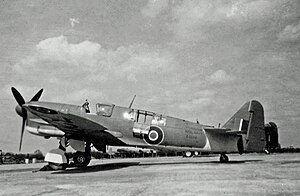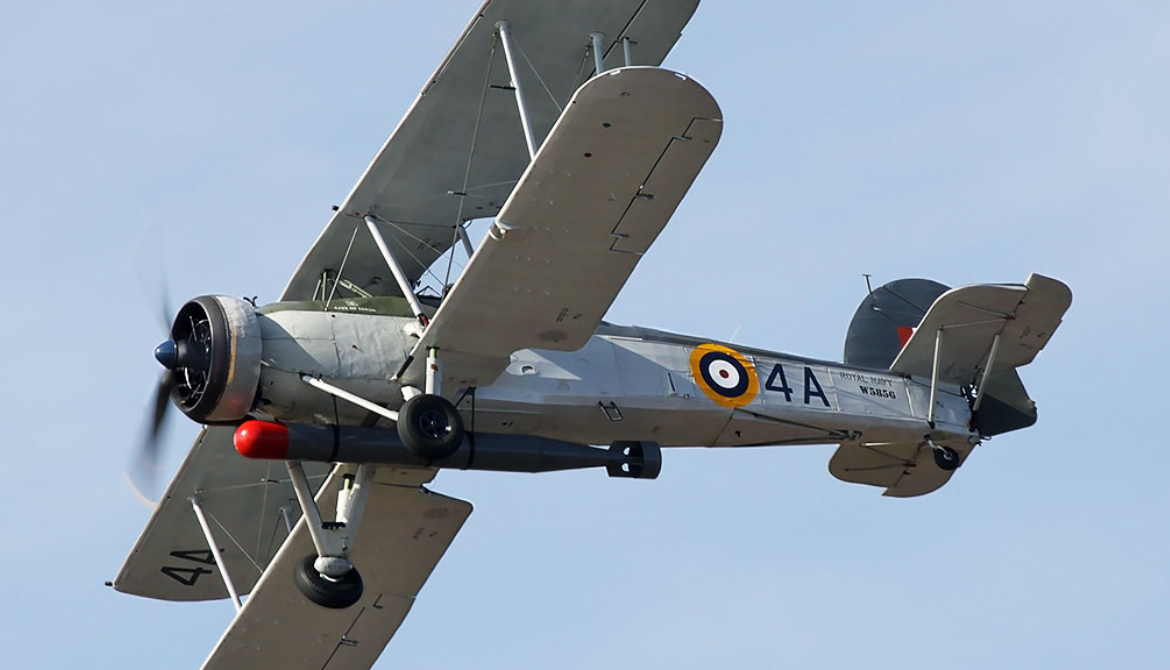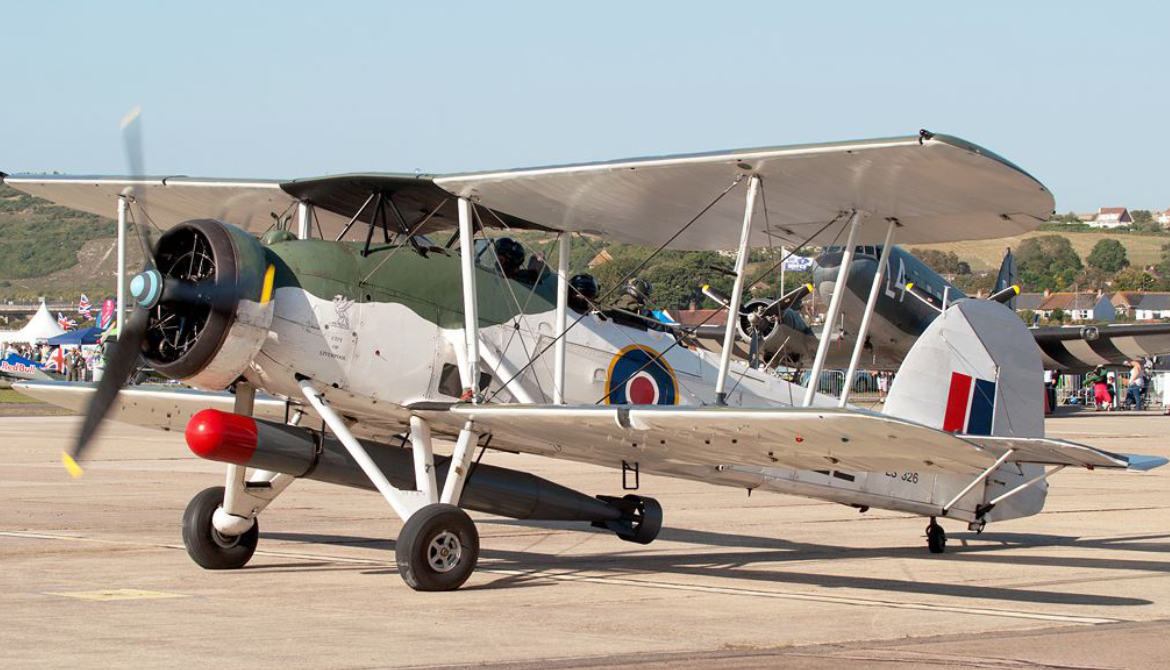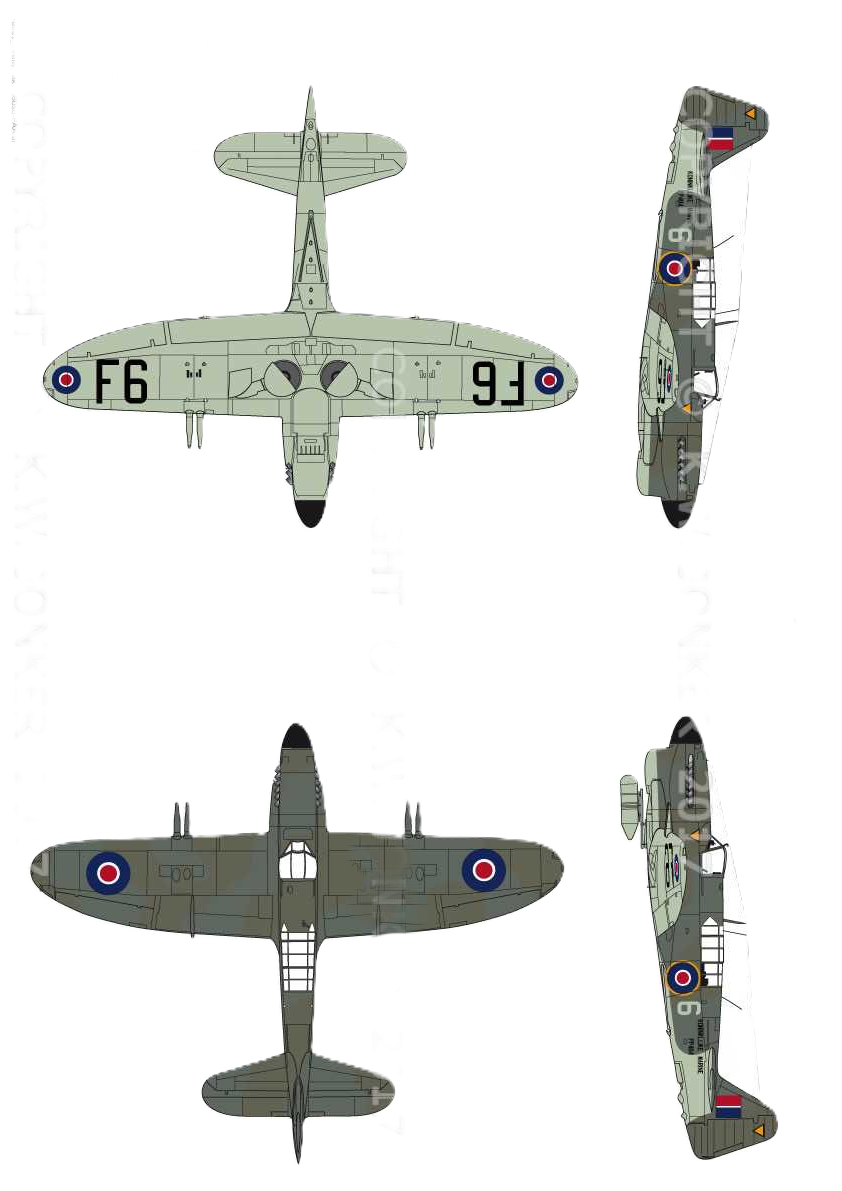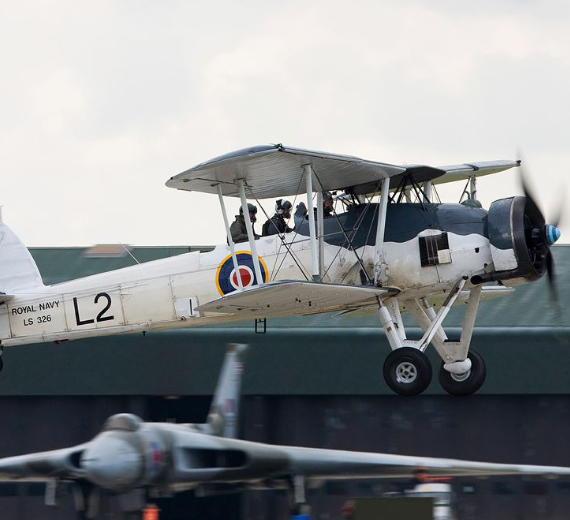Fairey Aviation
Fairey Firefly Mk.4
|
|||||||||||||||||||||||
|---|---|---|---|---|---|---|---|---|---|---|---|---|---|---|---|---|---|---|---|---|---|---|---|
.
History Fairey Aviation Company Limited
Fairey Firefly Mk.4

Development of the Firefly can be traced back to pair of specifications issued by the British Air Ministry in 1938, calling for new naval fighter designs. Designed to the contemporary FAA concept of a two-seat fleet reconnaissance/fighter, the pilot and observer were positioned at separate stations. In flight, the Firefly was superior in terms of both performance and firepower to its predecessor, the Fairey Fulmar. Due to a protracted development, the type only entered operational service towards the end of the conflict, at which point it was no longer competitive as a fighter. The limitations of a single engine in a relatively heavy airframe reduced its performance, but the Firefly proved to be a fairly sturdy, long-ranged, and docile aircraft during carrier operations.
The Fairey Firefly is a Second World War-era carrier-borne fighter aircraft and anti-submarine aircraft that was principally operated by the Fleet Air Arm (FAA). It was developed and built by the British aircraft manufacturer Fairey Aviation Company..

-
Operational history
Production and further development

Firefly U.9 drone aircraft in 1959 The Fairey Firefly served in the Second World War as a fleet fighter. During the post-war era, it was soon superseded in the fighter role by the arrival of more modern jet aircraft, thus the Firefly was adapted to perform in other roles, including strike operations and anti-submarine warfare. In these capacities, it remained a mainstay of the FAA until the mid-1950s. Both British and Australian Fireflies routinely performed ground–attack operations from various aircraft carriers during the Korean War. In foreign service, the type was in operation with the naval air arms of Australia, Canada, India and the Netherlands. As late as 1962, Dutch Fireflies were used to carry out attack sorties against Indonesian infiltrators in Dutch New Guinea. Its final uses were in various secondary roles, such as trainers, target tugs and drone aircraft.
Photo Gallery
Fairey Aviation Company Limited
Fairey Firefly Mk.4


Fairey Aviation Company Limited
Fairey Firefly Mk.4
General Info 1
-
-
- Crew: 2
- Length: 37 ft 11 in (11.56 m)
- Wingspan: 41 ft 2 in (12.55 m)
- Width: 13 ft 6 in (4.11 m) wings folded
- Height: (4.37 m) including prop disc
- Wing area: 330 sq ft (31 m2)
-
Powerplant
-
-
- Empty weight: (4,388 kg)
- Gross weight: (5,773 kg) stripped for fighter mission
-
-
- Max takeoff weight: (7,083 kg) with two drop-tanks
- Powerplant: 1 × Rolls-Royce Griffon 74 V-12 liquid-cooled piston engine, 2,300 hp (1,700 kW)
-
Performance
- Maximum speed: (591–621 km/h, at 14,000 ft (4,300 m)
-
-
-
- 330 mph (; 531 km/h) at sea level
-
-
- Cruise speed: 209 mph (336 km/h,
- Range: 760 mi (1,220 km, 660 nmi) on internal fuel at 209 mph ( 336 km/h)
- Ferry range: 1,335 mi (2,148 km, 1,160 nmi) with 2 90 imp gal (110 US gal; 410 L) drop-tanks at 209 mph (182 kn; 336 km/h)
- Service ceiling: 31,900 ft (9,700 m)
Armament
-
-
- Guns: 4 × 20 mm (0.787 in) Hispano Mk.V cannon
- Rockets: maximum 16x RP-3 60 lb (27.2 kg) rockets on 8 × zero-length launchers
- Bombs: maximum 2x 1,000 lb (454 kg) on underwing pylons
-
.
Links to Youtube & Others
On 17 April 1934, the prototype T.S.R II, K4190, performed its maiden flight, flown by Staniland. In comparison with the previous prototype, K4190 was equipped with a more powerful model of the Pegasus engine, an additional bay within the rear fuselage to counteract spin tendencies
Fairey Aviation
Fairey Firefly Mk.4
The Fairey Swordfish is a biplane torpedo bomber designed by the Fairey Aviation Company. Originating in the early 1930s, the Swordfish, nicknamed "Stringbag"
Youtube Link
The Fairey Swordfish is a biplane torpedo bomber designed by the Fairey Aviation Company. Originating in the early 1930s, the Swordfish, nicknamed "Stringbag"



